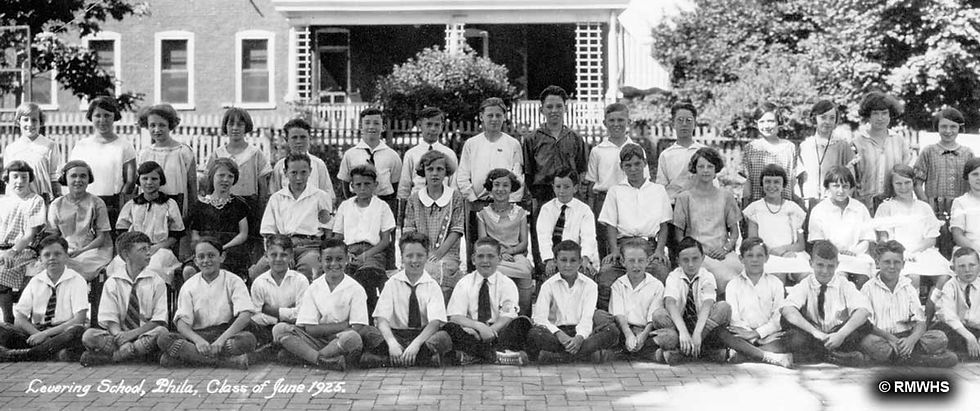Preserving & Promoting
Local History, Art, & Culture




Ridge Ave Roxborough Historic District
During the Revolutionary War
The British Army led by Sir William Howe, and the Continental Army, under George Washington fought one another in the Battle of Germantown, a major engagement in the Philadelphia campaign of the Revolutionary War. Although centered in Germantown on the east side of the Wissahickon Valley, the battle raged across northwest Philadelphia including Roxborough. After defeating the Continental Army at the Battle of Brandywine on 11 September 1777, and the Battle of Paoli on 20 September, Howe outmaneuvered Washington, seizing Philadelphia, the capital of the colonies, on 26 September. Howe left a garrison of some 3,000 troops in Philadelphia, while moving the bulk of his force to Germantown. Learning of the division, Washington determined to engage the British. His plan called for four separate columns to converge on the British position at Germantown. The ambition behind the plan was to surprise and destroy the British force, much in the same way as Washington had surprised and decisively defeated the Hessians at Trenton. In Germantown, Howe had his light infantry spread across his front as pickets. In the main camp, General Wilhelm von Knyphausen, second in command of the Hessian mercenaries in North America, led the British left, while Howe himself personally led the British right.
After dusk on 3 October 1777, the American force began the 16-mile march southeastward toward Germantown in complete darkness. The Americans remained undetected by the pickets, and the main British camp was, subsequently, unaware of the American advance. However, the darkness made communications between the American columns extremely difficult, and progress was far slower than expected. At dawn, most of the American forces had fallen too short of their intended positions, losing the element of surprise they otherwise enjoyed. One column, under the command of General John Sullivan, moved down Germantown Road. A column of New Jersey militia under Brigadier General William Smallwood moved down Old York Road to attack the British right. General Nathanael Greene's column moved down Limekiln Road.
The Pennsylvania Militia, led by Brigadier General John Armstrong Sr., marched down Ridge Road from the west and engaged von Knyphausen’s Hessian troops, who had dug in on the east side of the Wissahickon in the Falls of Schuylkill. The Pennsylvania Militia advanced down the Ridge Road to the confluence of the Wissahickon Creek and Schuylkill River and set up its artillery at the top of the ridge on the west bank of the Wissahickon. The Pennsylvania Militia fired ineffectively on the Hessians before withdrawing back up the Ridge Road (Figure 19). Armstrong's Pennsylvania Militia played no further part in the battle, which raged in Germantown.
Owing to confusion and miscommunication, the Continental Army failed to rout the British and Hessian soldiers at Germantown. Many on both sides were killed, especially during the failed American assault on British soldiers in the Chew House on Germantown Road. At the end of the day, Washington’s troops retreated back to Valley Forge, where the army encamped for the winter of 1777-1778. Of the 11,000 men Washington led into battle, 30 officers and 122 men were killed, and 117 officers and 404 men were wounded. British casualties in the battle were 71 killed, 448 wounded and 14 missing. Howe eventually resigned his command and his replacement, General Henry Clinton, abandoned Philadelphia for New York in June 1778.
A few months after the Battle of Germantown, a famous Revolutionary War incident occurred in Roxborough. On 19 December 1777, 40 members of Light Horse Harry Lee’s Virginia Dragoons were patrolling in Roxborough. Lee, the father of Civil War general Robert E. Lee, was not present. At nightfall, they arrived at the house of Andrew Wood and asked for shelter. After they were fed, some bedded down in the house, while others slept in the barn. Members of the British 16th Light Dragoons were also on patrol in Roxborough and discovered the American troops on the Wood property. Wood led the troopers staying in the house out the back door to safety. The troopers in the barn were not so fortunate. The British set fire to the barn and, as some of the troopers tried to exit, they were shot down. Others remained in the barn and were burned to death. A total of 18 Virginia troopers were killed that night. In 1860, the remains of the troopers were transferred to Leverington Cemetery, where a large monument to the victims of the massacre was erected.
After the Revolutionary War, every township in the Commonwealth estimated the costs of the damages caused by the British troops. In Roxborough, 19 property owners sustained damage totaling $3,228.99. Not surprisingly, Andrew Wood, whose barn had been burned when the Virginia Dragoons were massacred, sustained the greatest damages, estimated at $674.26.60
 Describe your image |
|---|
This information has been posted by RMWHS with the permission of the Philadelphia Historical Commission.
Sections:
60 Joseph Starne Miles and William H. Cooper, eds., A Historical Sketch of Roxborough, Manayunk, and Wissahickon (Philadelphia: George Fein & Co., 1940), p. 50.